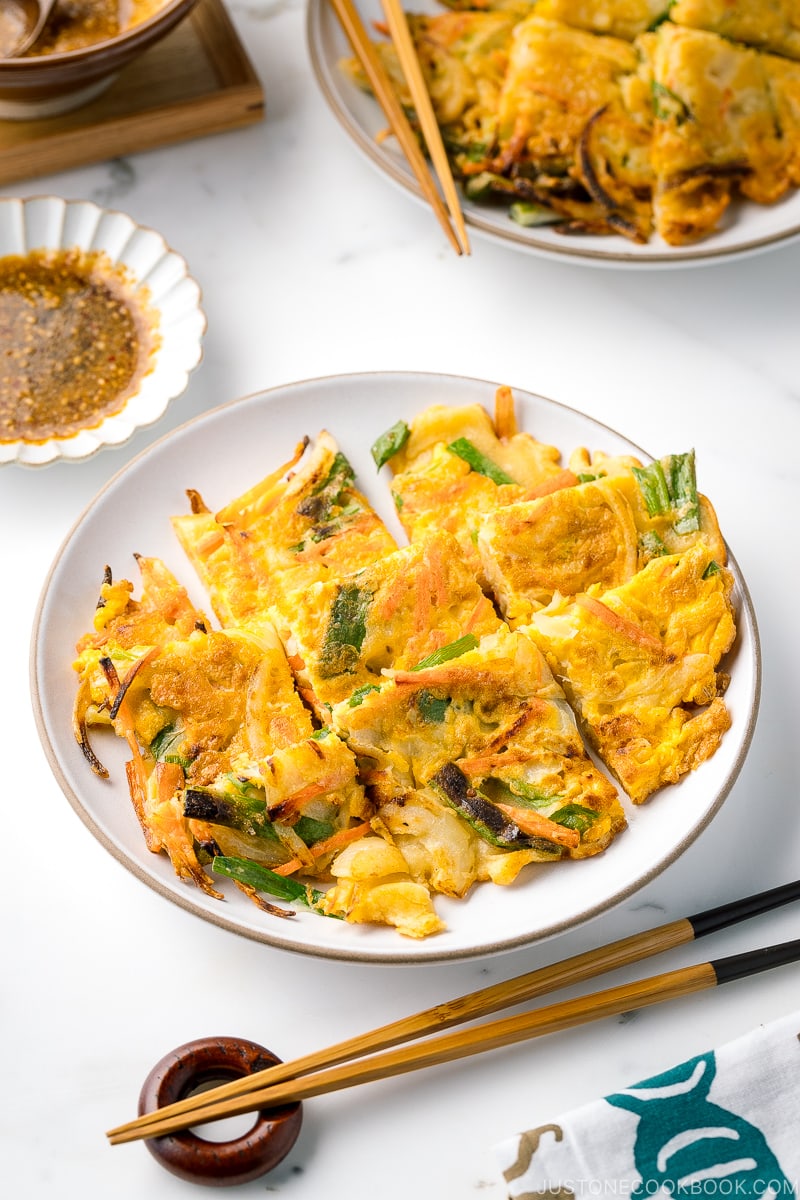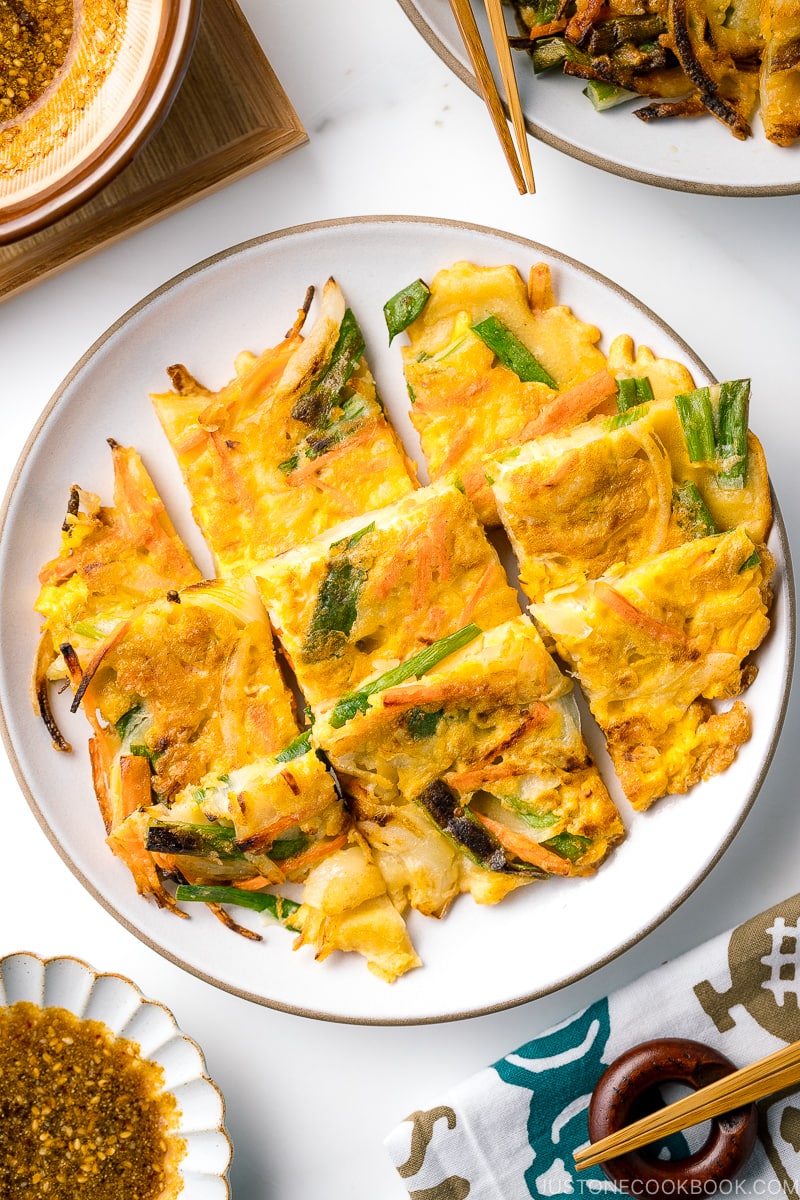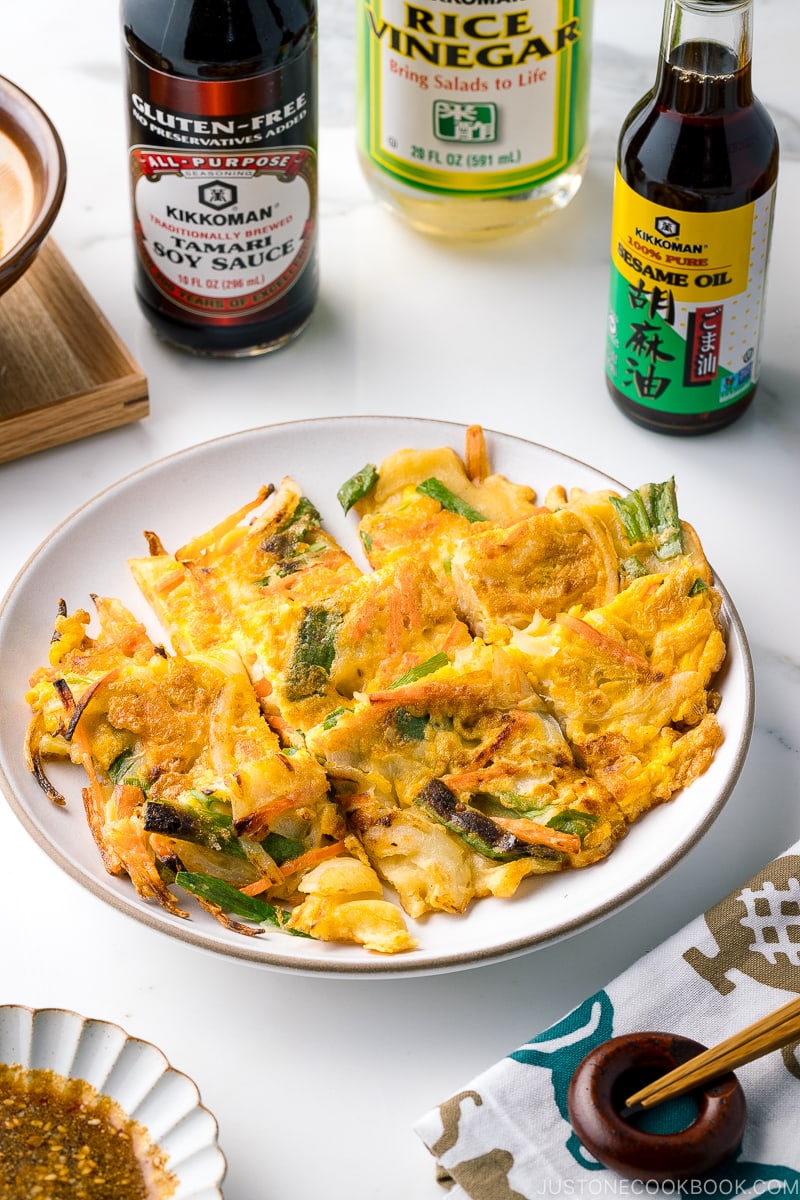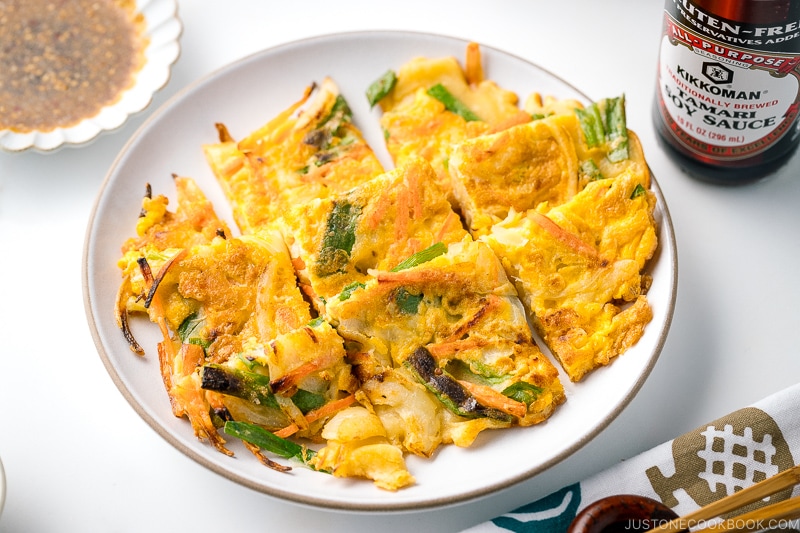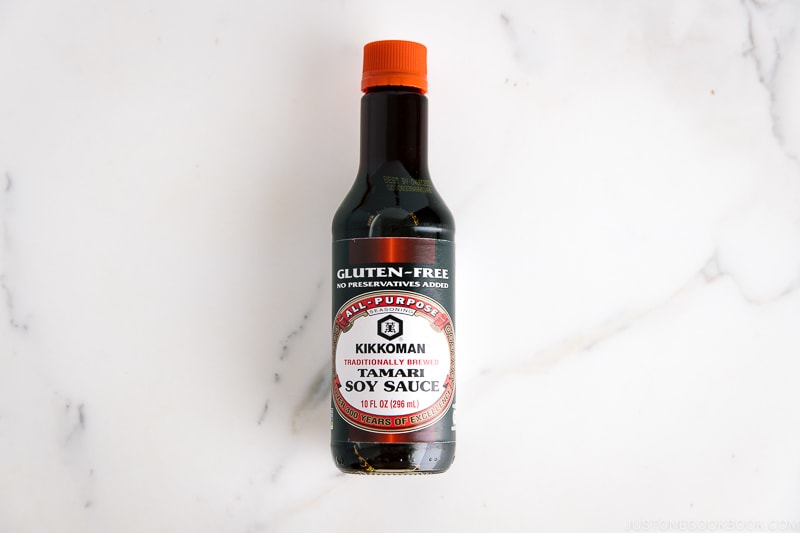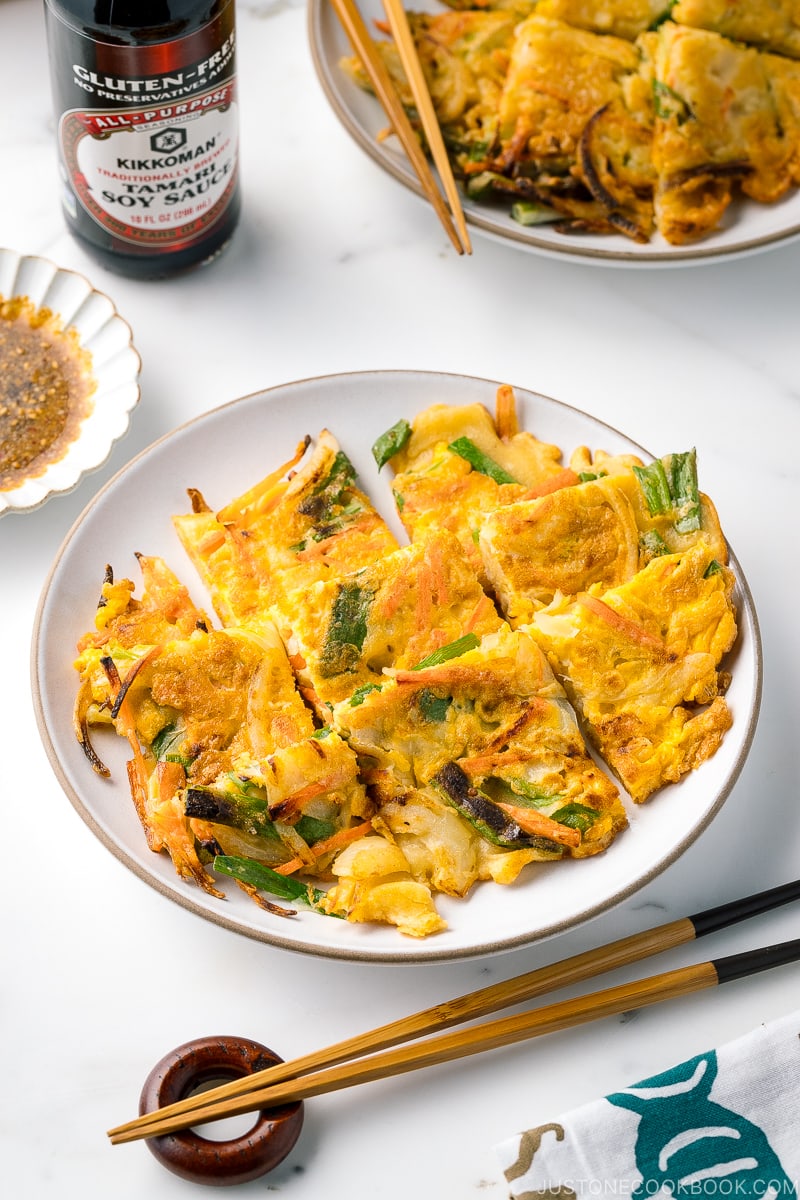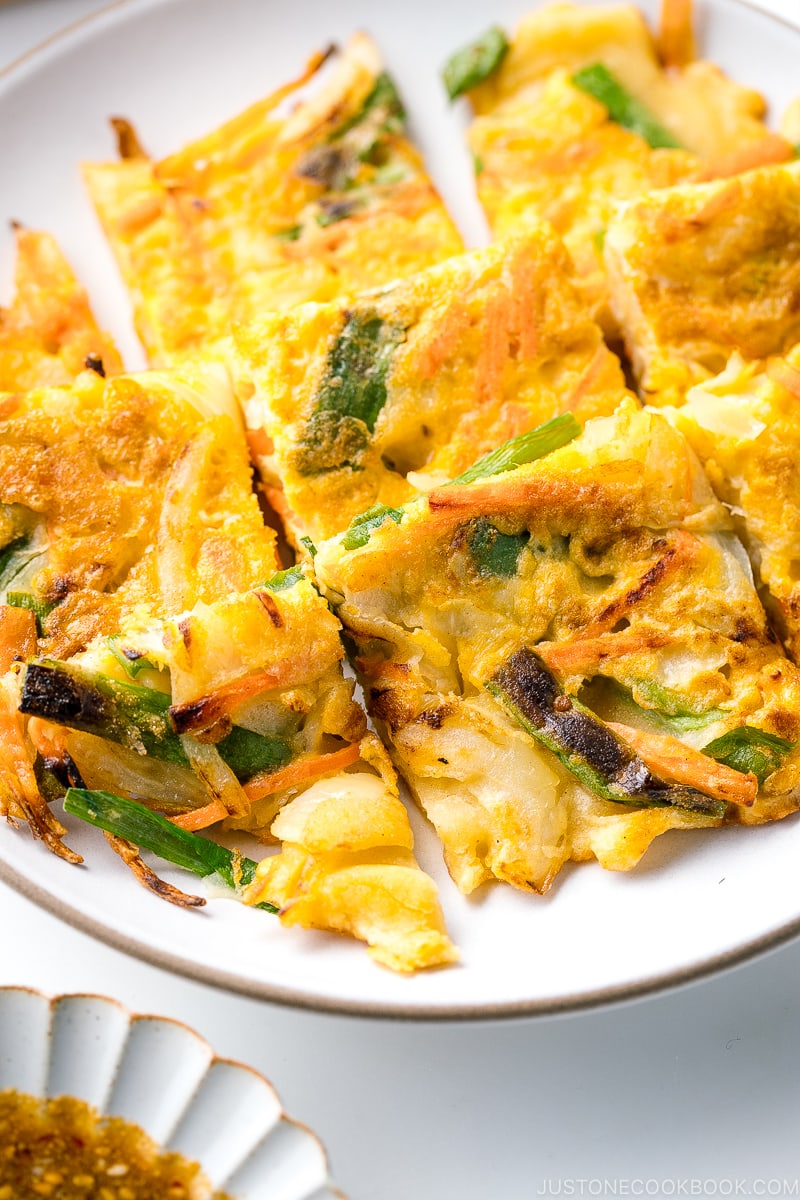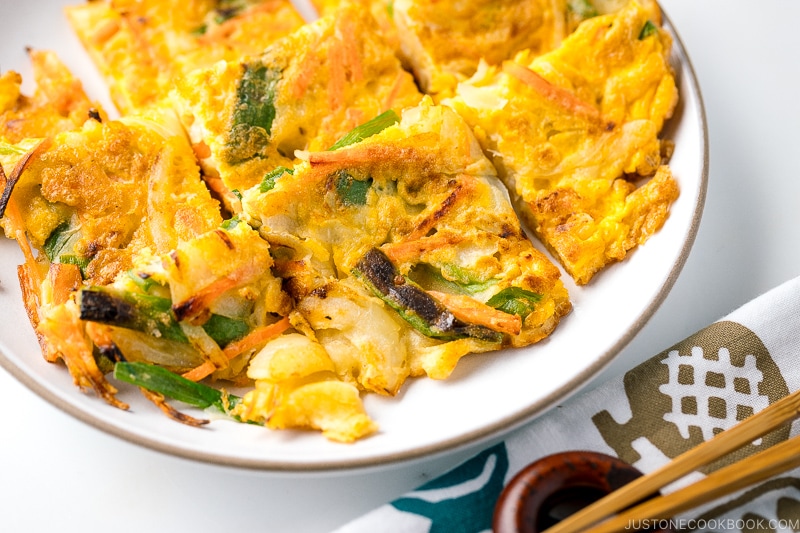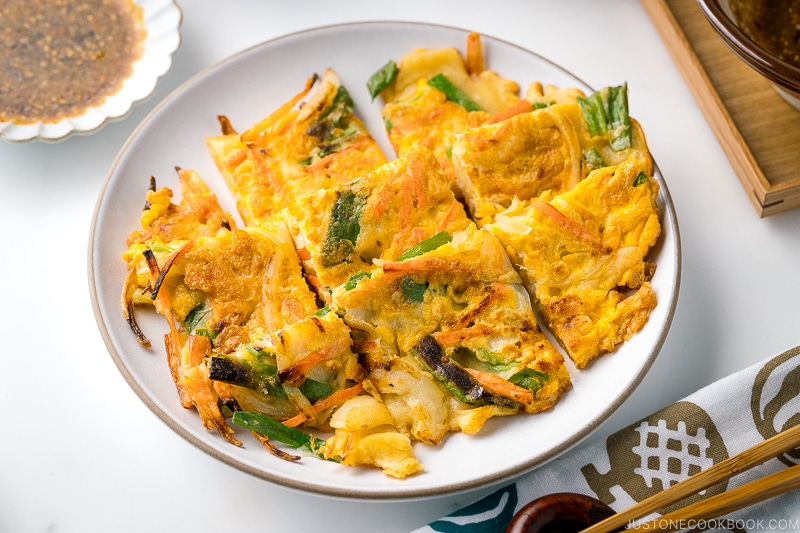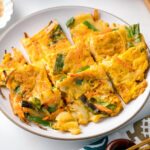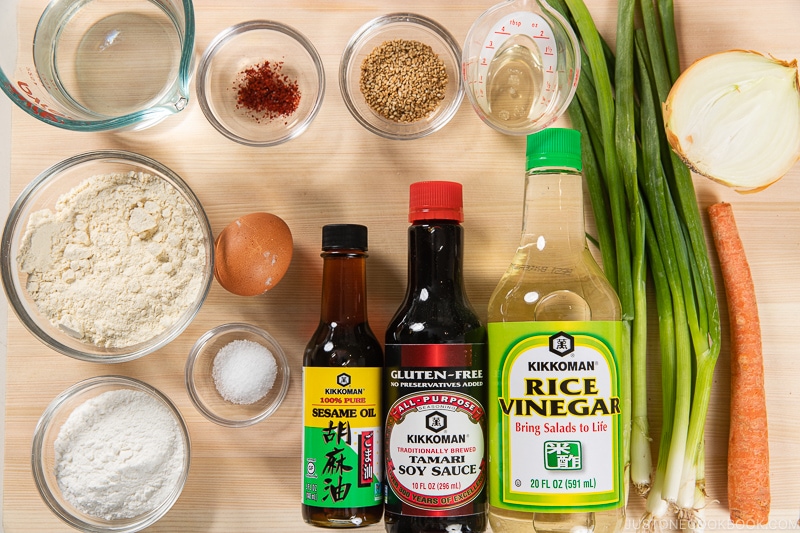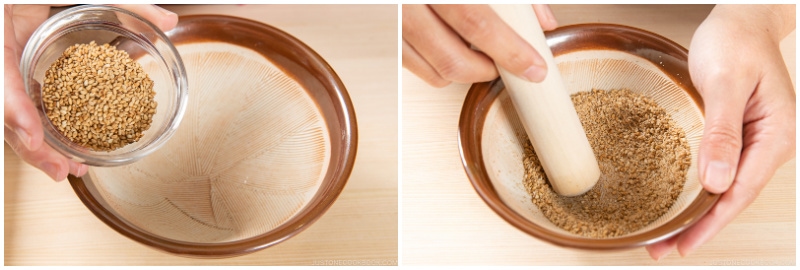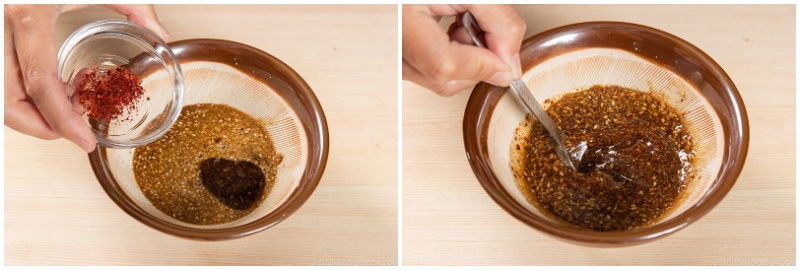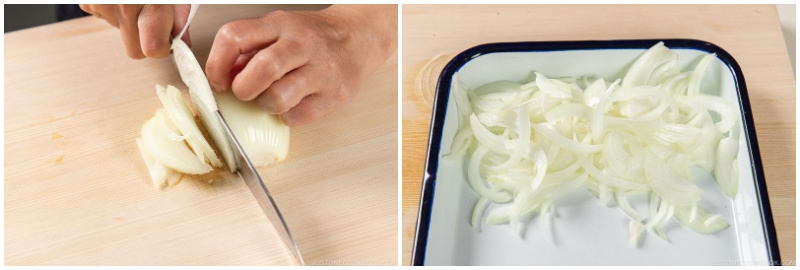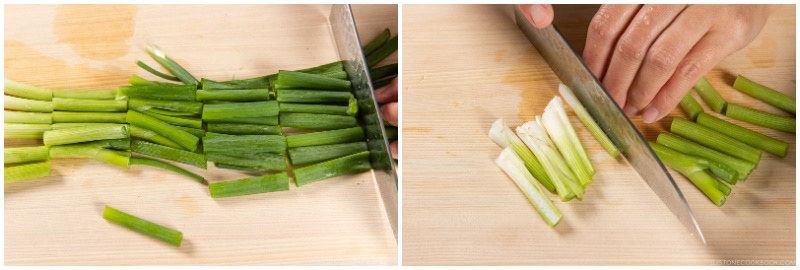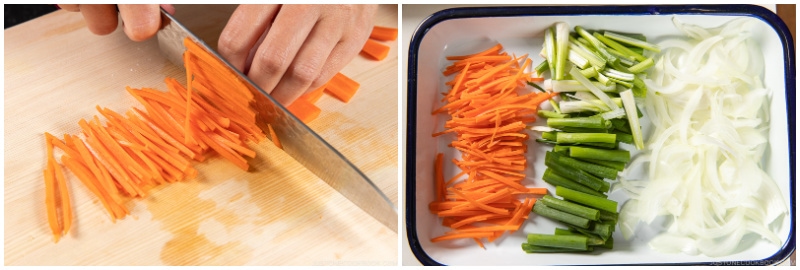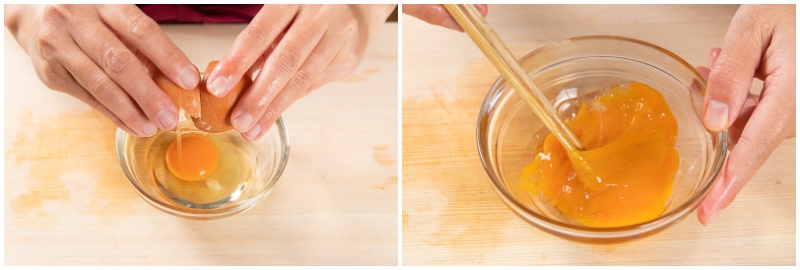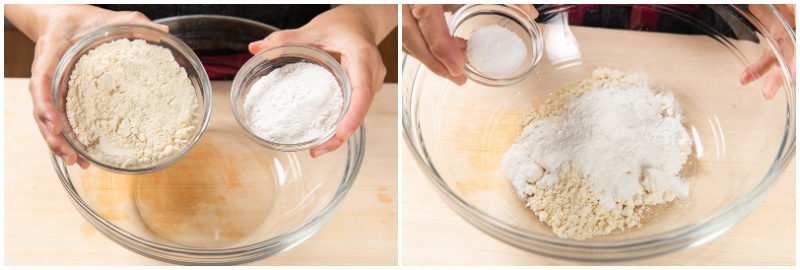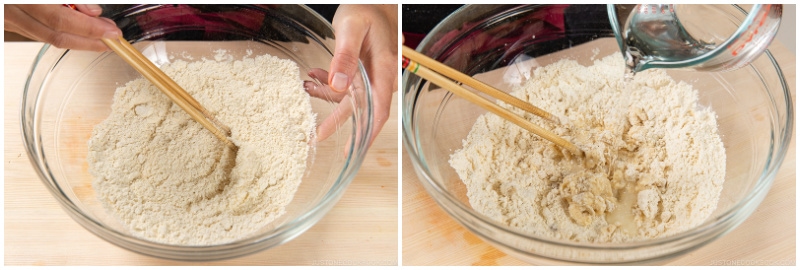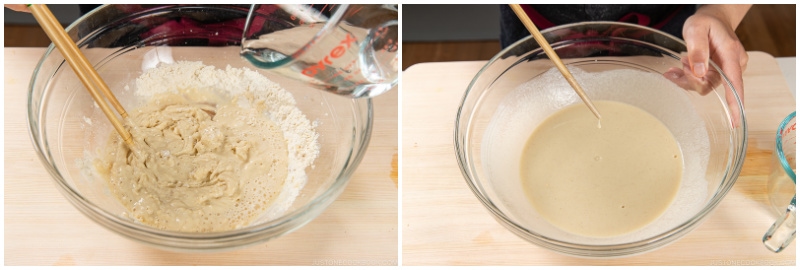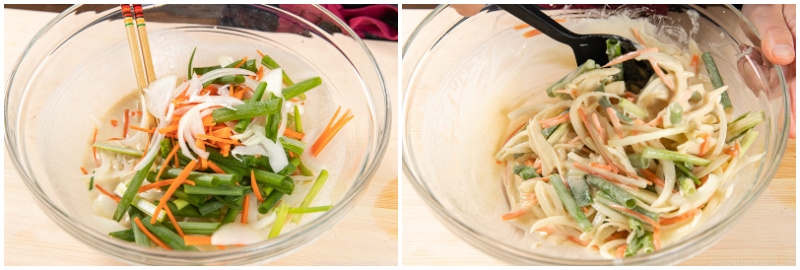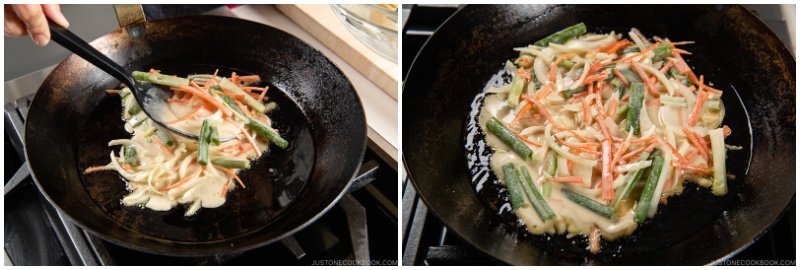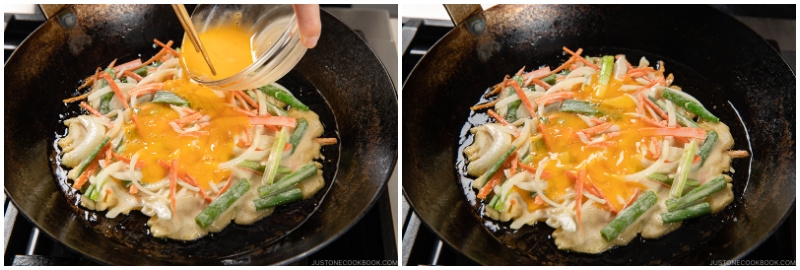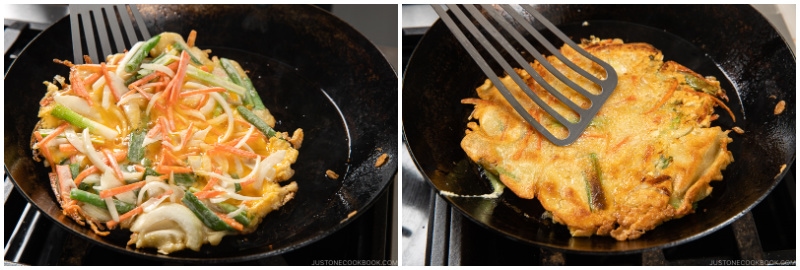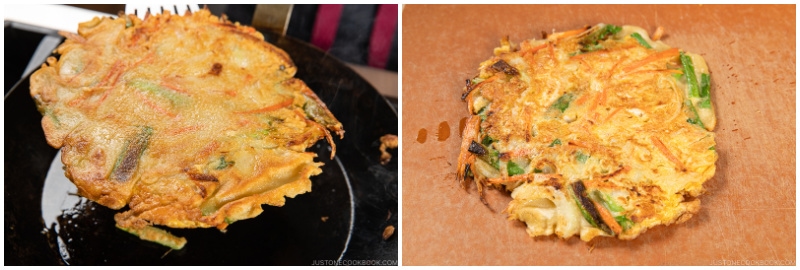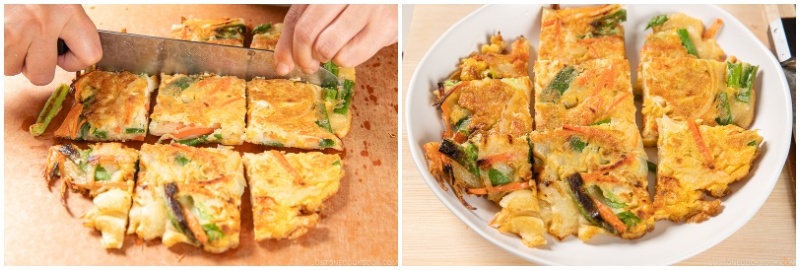Savory pancakes are one of the genius ways to use up any vegetable scraps you have laying in the refrigerator. This Gluten-Free Korean Veggie Pancake demonstrates how you can turn simple ingredients into something quick and good. This is a crowd-pleaser, even those who are gluten intolerant can enjoy it. My family devours it the moment the veggie pancake gets to the table.
Korean Pancakes in Japan
Korean pancake or jeon (pan-fried battered food in Korean) is a very popular food in Japan, and it goes by a different name called Chijimi (チヂミ). Japanese people love everything Korean – from TV dramas to music, to fashion, and to food. With a delicious crunch and tenderness, the Korean pancake craze is here to stay, and it’s becoming a staple dish for Japanese home cooks to make for the family. When we make it at home, we usually reach for any available vegetable scraps left in the refrigerator. Because that’s the beauty of it. You can use whatever you have, and modify to your version. In my recipe today, I used the 3 most universally common ingredients: onion, carrot, and scallion.
Making Gluten-Free Korean Pancakes
I have a Korean Pancake recipe with shrimp and scallions on the blog, but for this recipe, I wanted to make it gluten-free. It took me several trials to perfect the pancake batter that is:
flavorful crispy around the edges with a chewy tenderness on the inside and gluten-free (without too much work)
At the end of my testing, my family and I concluded the best batter was made with the combination of this gluten-free flour and rice flour. The gluten-free flour is made of garbanzo bean flour, potato starch, whole grain white sorghum flour, tapioca flour, and fava bean flour, and the pancake batter was a lot tastier than a simple quick homemade mix of rice flour, potato starch, and tapioca starch.
Savory Soy Dipping Sauce
The dipping sauce is the ideal complement to the Korean pancakes. The savory pancakes are already delicious as they are, but I highly recommend dipping them in the sauce for an extra punch of flavors. You’ll need just 5 simple pantry ingredients to whisk it together.
Soy sauce Rice vinegar Sesame oil Sesame seeds Gochugaru (Korean pepper flakes) (if you like it spicy)
Gluten-Free Tamari Soy Sauce
I love using gluten-free tamari soy sauce from Kikkoman USA whenever I make gluten-free recipes. Instead of wheat, the gluten-free soy sauce is made from rice, soybeans, and salt. It is preservative-free.
How to Make Korean Pancakes
Here’s the quick overview of the cooking process:
Helpful Cooking Tips for Korean Veggie Pancake
1. Choose ingredients that are easy and fast to cook
If you’re new to making savory pancakes, I’d avoid ingredients that are hard to cook. For example, many Japanese versions of Korean Pancakes include thinly shredded gobo (burdock root). But if you’re not good at julienning gobo, it’s best to avoid because it takes forever to cook thick pieces of gobo.
2. Cut the ingredients thinly
Because the ingredients are mixed in with the batter and will be cooked at the same time, you want to make sure they are cut into thin, uniformed sizes. Onion, carrot, and some denser ingredients should be cut thinly so that they get cooked faster. You can always use a mandoline slicer or julienne peeler or simply use thin vegetables like garlic chives and scallions.
3. Don’t be shy on oil
I’ve tried making the pancakes with less oil, but the result is less satisfying. You can only achieve the crispy crunchy edges by frying the batter in the hot oil. So don’t skimp on it. The amount of oil varies depending on the size of the pan, but you should add enough to the pan to move it around. 2 mm depth of oil is a good amount to start. To add a touch of a fragrant nutty aroma, I use dark roasted sesame oil and non-toasted sesame oil for my recipe. You can mix canola (vegetable) oil and roasted sesame oil, too.
4. Make smaller pancake first
If you are not comfortable about flipping the pancake in the frying pan, start by making smaller size pancake first. It’s the matter of practice, and you’ll get better. Your spatula should be big and flexible enough to scoop the pancake and flip.
5. Be patient
Let the pancake batter sits untouched until it firms up. If you flip too early, the batter will break. It should be golden, crunchy, and looks delicious before you flip, and ONLY ONCE.
Ideas for Variations
Scallion and shrimp Chinese chives (garlic chives) Seafood mix such as shrimp and squid Shredded kale
More Savory Pancakes You’ll Love
Okonomiyaki (Japanese Savory Cabbage Pancake) Hiroshima-style Okonomiyaki
Wish to learn more about Japanese cooking? Sign up for our free newsletter to receive cooking tips & recipe updates! And stay in touch with me on Facebook, Pinterest, YouTube, and Instagram.
